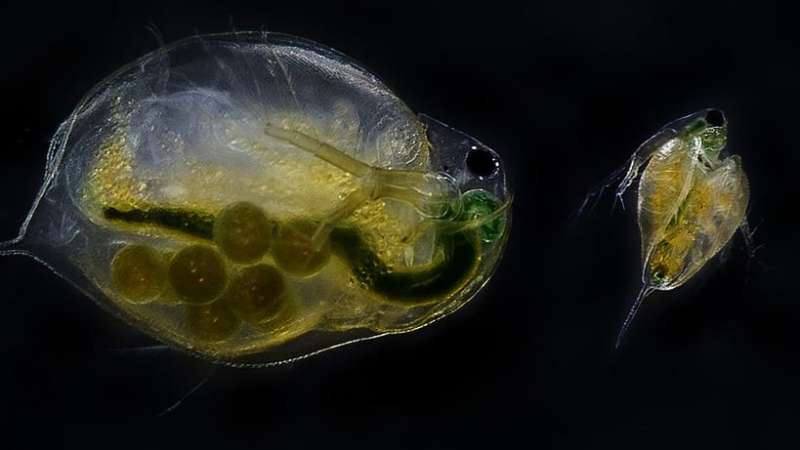Credit: Monash University
Dr. Matt Hall is interested in the differences between males and females. Why are some males of a species larger and stronger, while females are more hardy and long-lived? Why do they experience illness differently?
"Man flu may well be real, right?" says Dr. Hall, who is a researcher and lecturer in the Monash School of Biological Sciences. Not only do males and females react differently to disease – science has now established that men are often hit harder by the flu virus than women – our sex also determines how we will react to medicines. But this finding isn't always reflected in the pharmacy.
"It has been understudied from an evolutionary point of view, and from an applied angle as well," says Dr. Hall.
"There have been some classic cases of how drug doses were fundamentally wrong, because all of the treatments were based on male research," he says. "Up until the '90s you didn't have to do any biochemical research on males and females. Subsequently, you've been encouraged to include both sexes, but there's still this disconnect about whether things should be tailored to one or the other."
It's also still the case that "most of the research into the mouse or the fly is based on a single sex," he says. "We're looking at what these differences mean for the evolution and spread of disease."
Specifically, Dr. Hall is investigating sex, death and disease in male and female Daphnia magna, a common species of transparent, freshwater water fleas that are found around the world, from deserts to alpine regions, coastal ponds and even in lakes on campus at Monash in Clayton.
The fleas grow up to five millimetres and "are a unique system for linking ecology and evolution to the characteristics of infection."
In contrast to humans, it's the females of the water flea that are more vulnerable to pathogen infection. Not all species need to "suffer" from man flu.
Matt studies the biological challenges of ageing, fighting infection and mate choice. "Every organism faces the same challenge of finding a partner, fighting off pathogens and parasites and trying to live healthily – but why are some better at it than others?"
Daphnia are able to cope with all these challenges. They pack-in 30,000 genes into a small genome, they reproduce quickly, can create genetically identical daughters (known as clones), and will rapidly change and adapt to environments.
As a species the water fleas are the superheroes of the rock pool and can transform when they sense a predator is near. "They grow huge, ornate modifications – helmets and spikes – which makes them harder to eat and too big for a predator to pursue."
"With the genomic revolution, you can reuse these creatures to revisit a lot of ecological and evolutionary questions using new technologies."
Dr. Hall began investigating water fleas in 2009, when he was a postdoctoral researcher working with Dieter Ebert, a pioneer in disease biology and professor of zoology and evolutionary biology at the University of Basel, Switzerland. Dr. Hall says he still collaborates with Professor Ebert through the research he's doing at Monash, particularly concerning the genetic basis of a host's susceptibility to infection.
"We're trying to understand how infection and ageing and sex interact with each other," he says. "We know that widely one sex is more vulnerable to disease, but we don't know how that vulnerability comes about and what it means for the spread of disease."
Dr. Hall describes the flea as a "data generator."
"We use it to understand more about evolutionary theory – how and why a disease might evolve to become more virulent or less virulent, or why do we see differences in males and females almost universally across the animal kingdom. There are strong theories around both of those things, so a lot of our work is about testing those predictions and generating new theory. What sort of conditions favour males and females being very similar, and favour them being very different?"
Dr. Hall's ambition is to contribute to "basic knowledge and theory for why the sexes differ," and he's most wary of any attempt to use the flea as a weapon in the battle between the sexes.
"The difference between the sexes is interesting," he says. "There are stereotypes for one sex being weaker than the other when it comes to infection, but it varies by species." In humans it's males, as it is in many mammals and birds, but in insects and the water flea it's females.
"What is important is that male and female differences are universal, and understanding these differences matters for both how we understand disease evolution and also its potential treatment."
Provided by Monash University






















